High CPU
Performance
Up to 192 cores
ASUS RS520QA-E13 supports optional CXL memory expansion in a single-socket 2U4N form factor, enabling greater flexibility and scalability for high-density workloads. It achieves up to 5TB of memory capacity per node with CPU memory operating at 1DPC speed to deliver high memory bandwidth –making it an ideal solution for memory-intensive applications in modern data centers, especially suited for EDA workloads and HPC.

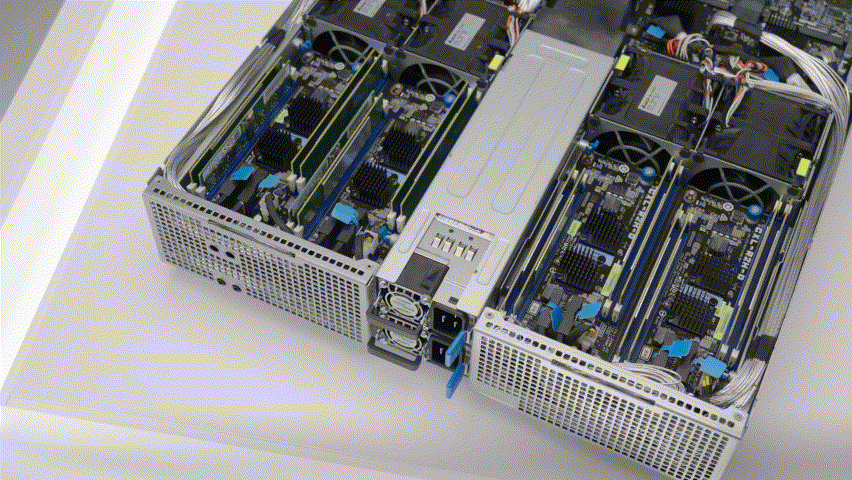

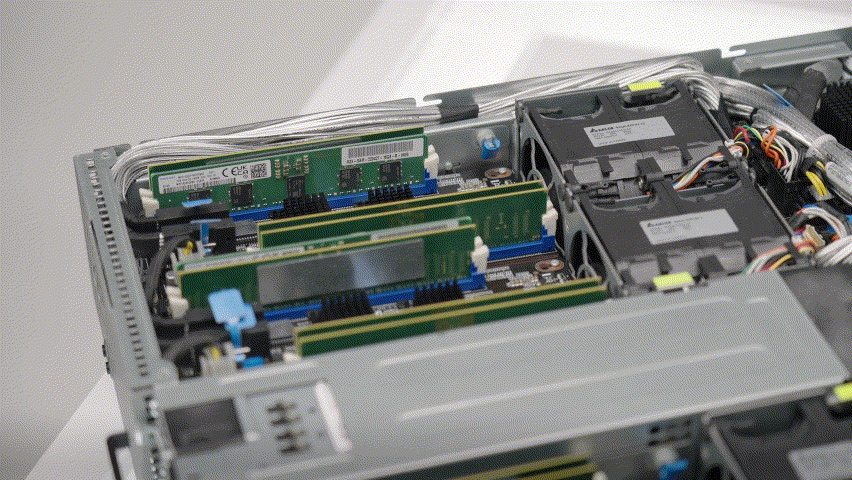
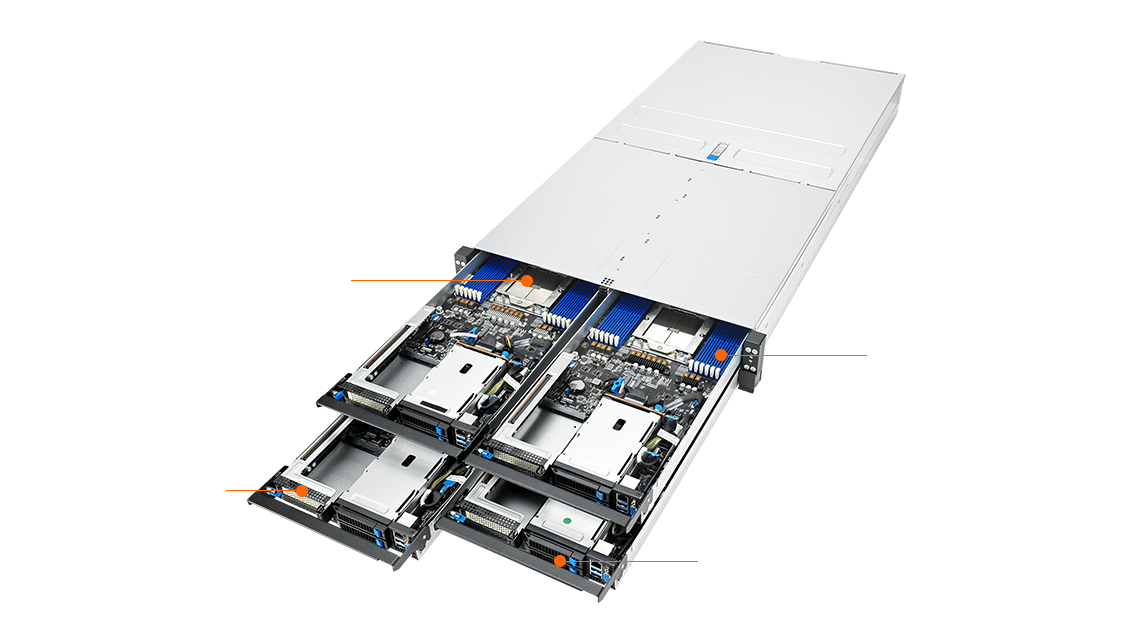
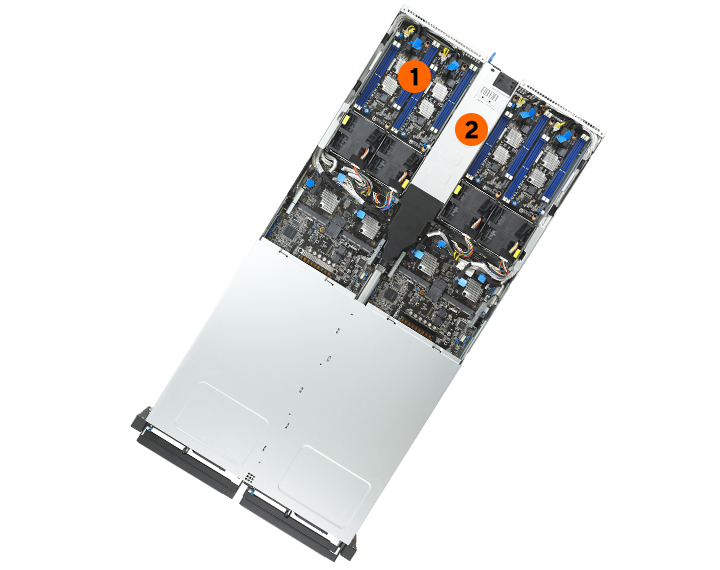
11 x AMD EPYC™ 9005-series processors
(TDP: 500W)
22 x PCIe® 5.0 slots
(1 x PCIe + 1 x OCP 3.0)
312 x DDR5 DIMMs (1DPC)
42 x 2.5” bays
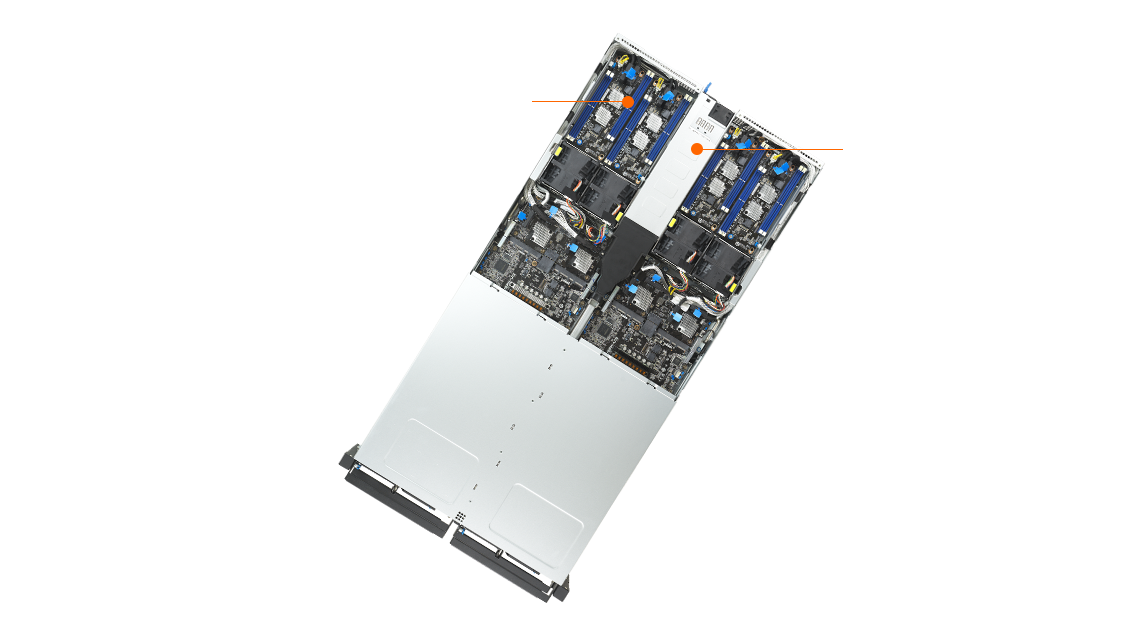
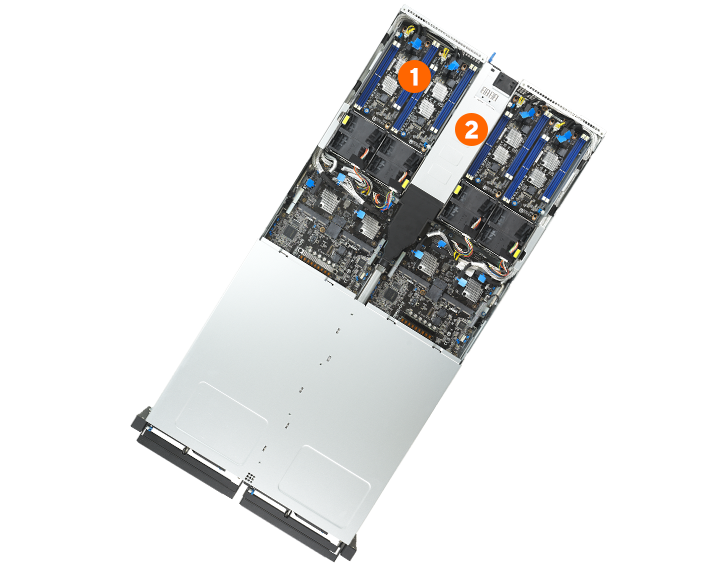
1CXL module 8 x DDR5 DIMMs
*CXL support is optional and dependent on configuration
22+Spare/1+1 3200W 80 PLUS Titanium PSU


1Per node
1* PCIe Gen5
1* OCP 3.0
2Per node 2* 2.5” HDD
3Per node sufficient I/O
2* USB 3.2 ports
1* MGMT LAN port
1* VGA port


14* 8080 System Fan
22* 3200W CRPS
3Per node 2* CXL Module (Optional)

RS520QA-E13 is a single-socket 2U4N server powered by AMD EPYC 9005 processors, offering up to 192 cores per node and support for optional CXL memory expansion. With a total of 20 DIMMs per node (12 onboard + 8 via CXL modules), the platform delivers exceptional compute density and memory flexibility for data-heavy workloads like EDA and HPC.
Up to 192 cores
2 slots
12 DIMM
2 bays
8 more DIMMs
Up to 500WTDP
RS520QA-E13 leverages ASUS CXL memory expanders to overcome 2DPC speed limitations — maintaining DDR5-6400 on CPU DIMMs (1DPC) while CXL modules contribute additional bandwidth via PCIe 5.0. This enables RS520QA-E13 with CXL to achieve up to additional 96.7% theoretical memory bandwidth compared to other EPYC 9005 servers with 2DPC design.

*Based on AMD EPYC 9005 platforms with various memory configurations
*CXL support is optional and dependent on configuration
With CXL memory expansion, RS520QA-E13 enables 96GB DIMMs to fulfill high-capacity requirements, and delivers increased memory bandwidth and system scalability while minimizing reliance on high-cost 128GB or 256GB modules, resulting in more efficient memory scaling and lower platform cost for high-density deployments.
Here is a chart showing the memory cost saving when using CXL memory expansion compared to other servers with 12 x DIMM slots.
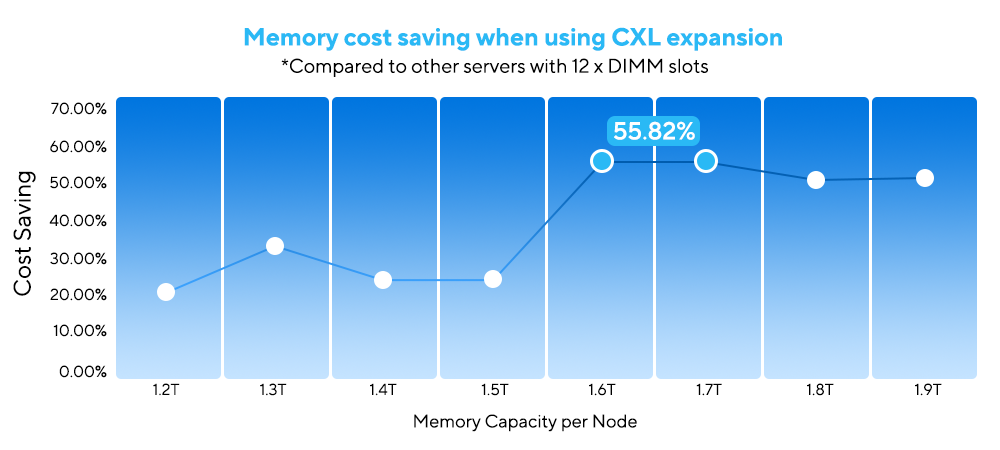
*Based on 2025 Q2 DDR5 6400 price
*CXL support is optional and dependent on configuration.
This server is designed with advanced air cooling to support high-TDP CPUs in dense 2U4N environments. Featuring a custom EVAC heatpipe module and dedicated PSU-airflow design, it provides reliable thermal management to maintain performance under demanding workloads.

Direct-contact heatpipe design accelerates thermal transfer from the CPU to the heatsink, allowing efficient dissipation even under high TDP workloads. Supports 500W TDP in 25°C conditions and 400W at 35°C.
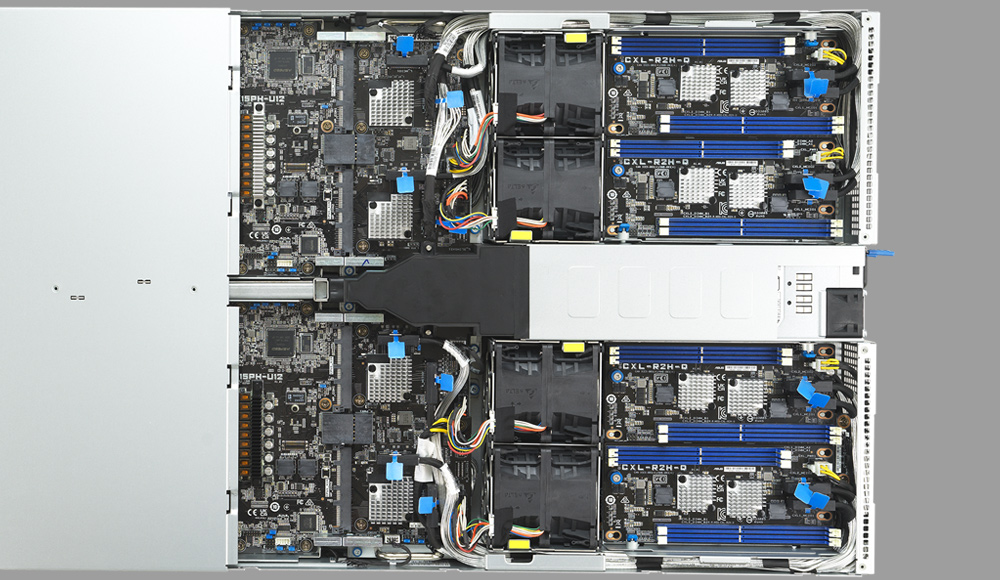
By separating the PSU thermal path from the CPU node area to ensure stable airflow to power components, lowers PSU-inlet temperature, and maintains system efficiency under full load.
ASUS has re-engineered the server layout with a user-friendly design that helps reduce repair downtime and ensures quick resumption of normal operations. This includes a front-access layout that allows IT staff to service each node without entering hot aisles — maximizing convenience and operational uptime. The chassis also features an ergonomic handle, quick-release top cover, and tool-less brackets for PCIe, M.2 riser, and backplane, simplifying upgrades and routine maintenance with minimal disruption.

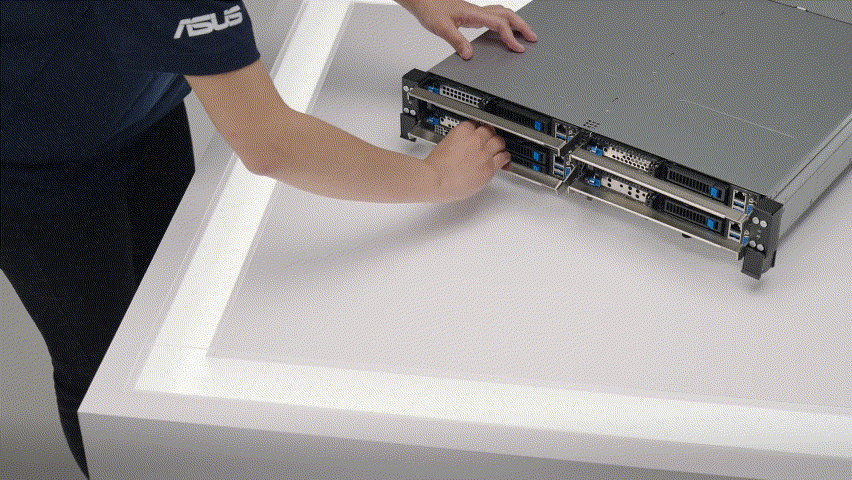


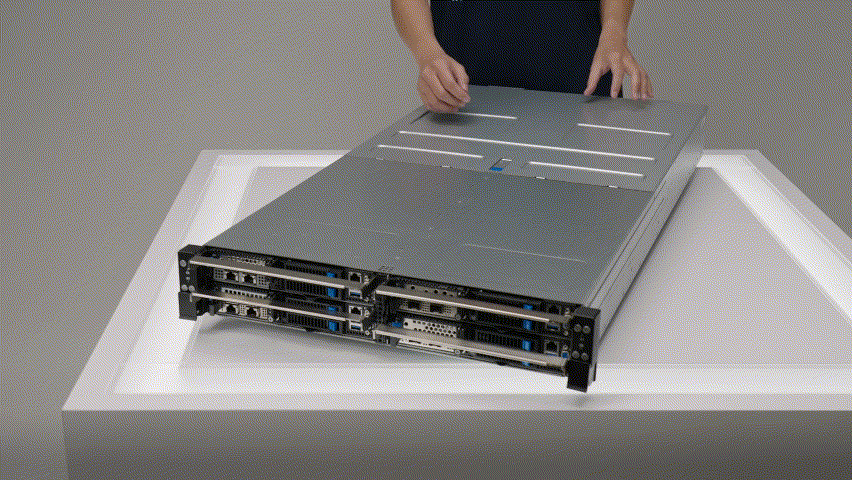



The AMD EPYC™ 9005 series takes AMD's legacy of x86 architecture innovation to new heights, leveraging cutting-edge 3nm technology for record-breaking performance. With the introduction of high-performance DDR5 DIMMs and blazing-fast PCIe 5.0 I/O, EPYC™ 9005 CPUs are engineered to handle the most demanding workloads. Designed to power memory-hungry AI-driven data centers, machine learning (ML), high-performance computing (HPC), and large in-memory computations.
Up to
192
cores
on Zen 5c
128
PCIe 5.0 lanes in a single-socket server
The new AMD EPYC 9004 processors excel at providing full features and functionality for both dual-socket and single-socket platforms, but our new servers ASUS is introducing an CPU-balanced architecture to enable secure and optimal CPU-performance efficiency.
This architecture extends the full bandwidth to either dual- or single-CPU configurations, enabling more computing capability and much-improved overall power efficiency for compute-intensive workloads. This architecture allows customers to take full advantage of bandwidth capabilities of the dual-CPU architecture with a single CPU, while offering the flexibility to upgrade later with the addition of a second CPU.
* Features, specification and design vary by models and configuration
ASUS holds the most amount of records in dual-socket (2P) and single-socket (1P) on SPEC CPU 2017 benchmark and dominate the computing performance. These top performance results provide a useful insight into compute-intensive workloads on different computer systems, enabling our customers to reduce complexity, tackle challenging workloads and accelerate system validations.
ASUS servers feature Performance Boost technology to achieve the best server performance and agility by tuning servers to match the requirements of workloads, letting you gain greater control of your server environment. This technology improves workload throughput by maximizing processor frequency and boost power, ideal for timesensitive applications such as financial services or data center operations.

Maximizes the processor frequency in multi-core operations, avoiding frequency shifting for reduced latency.

Automatic power acceleration with an innovative voltage design to increase server overall performance.

Preconfigured BIOS server profiles based on workloads and benchmarks for improved performance and efficiency.
* SPEC is a corporation formed to establish and endorse standardized benchmarks and tools to evaluate performance and energy efficiency of computer systems
ASUS select servers achieved most power efficiency positions on the SPEC Power benchmark for energy efficiency and demonstrate to customers how they can achieve faster deployments and higher energy efficiency for their IT infrastructure.

Adjust overall loading automatically based on real-time monitoring to decrease overall power consumption for Improved efficiency and cost/performance optimization.

Features intelligent fan-curve adjustments to fit the real-time server usage patterns and lower fan power consumption.
ASUS ASMB12-iKVM is the latest server-management solution from ASUS, built upon the ASPEED 2600 chipset running on the latest AMI MegaRAC SP-X. The module provides various interfaces to enable out-of-band server management through WebGUI, Intelligent Platform Management Interface (IPMI) and Redfish® API.

ASUS Control Center (ACC) is remote IT management software designed for monitoring your hardware and software IT assets and inventory status and enabling seamless remote BIOS configurations and updates, efficient IT diagnostics and troubleshooting and enhanced security with Hotfix updates, allowing easier server management for any IT infrastructure.
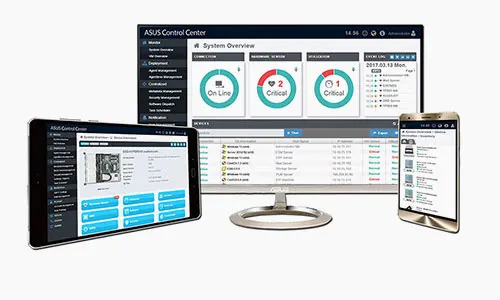
ASUS servers integrate PFR FPGA as the platform Root-of-Trust solution for firmware resiliency to prevent from hackers from gaining access to infrastructure. ASUS security solutions are fully compliant with the 2018 National Institute of Standards and Technology (NIST) SP 800 193 specification.
* Platform Firmware Resilience (PFR) module must be specified at time of purchase and is factory-fitted. It is not for sale separately.
ASUS servers also include support Trusted Platform Module 2.0 (TPM 2.0) to secure hardware through integrated cryptographic keys and offer regular firmware update for vulnerabilities.